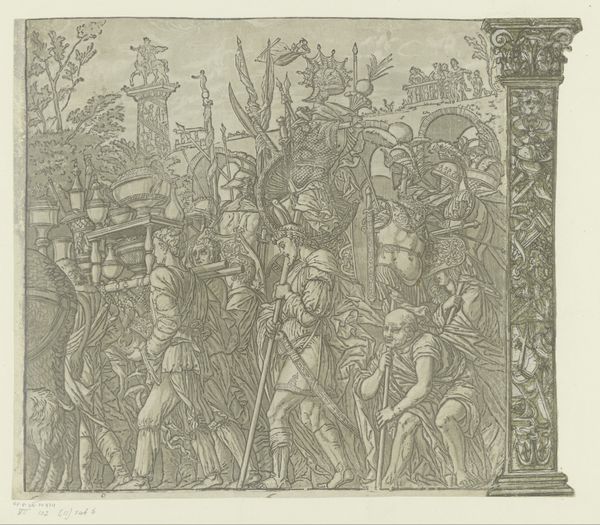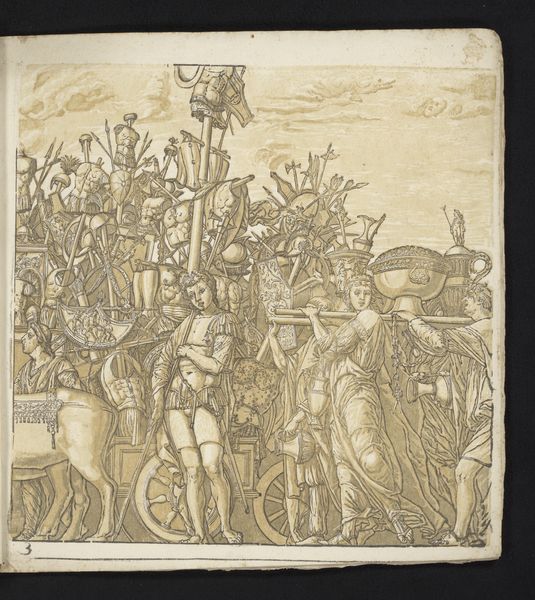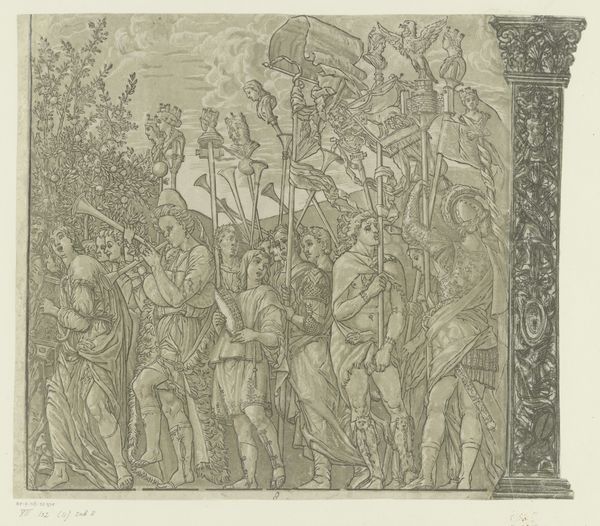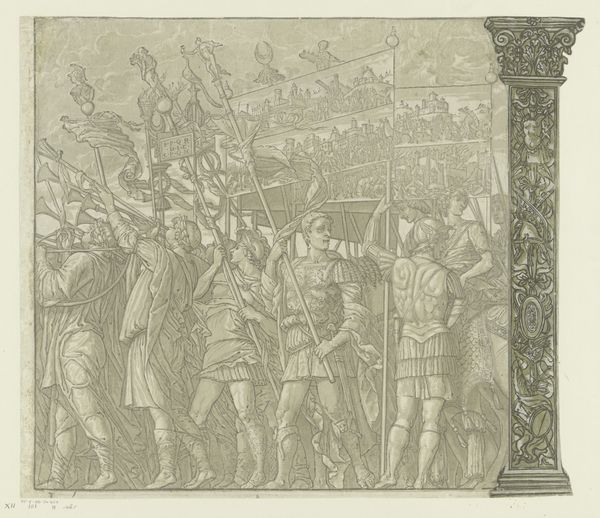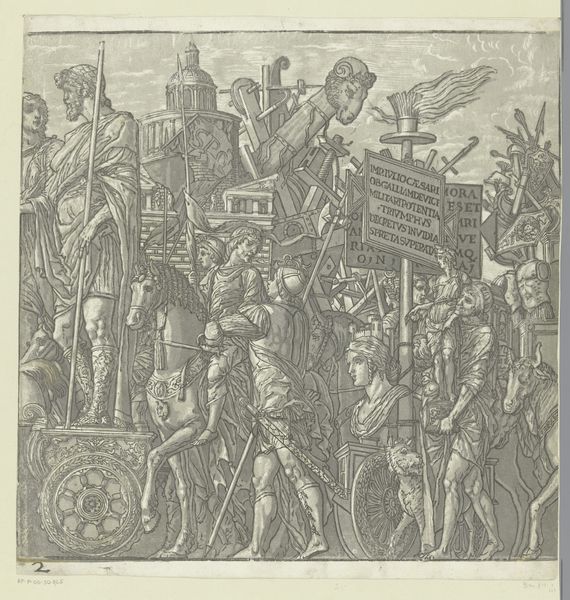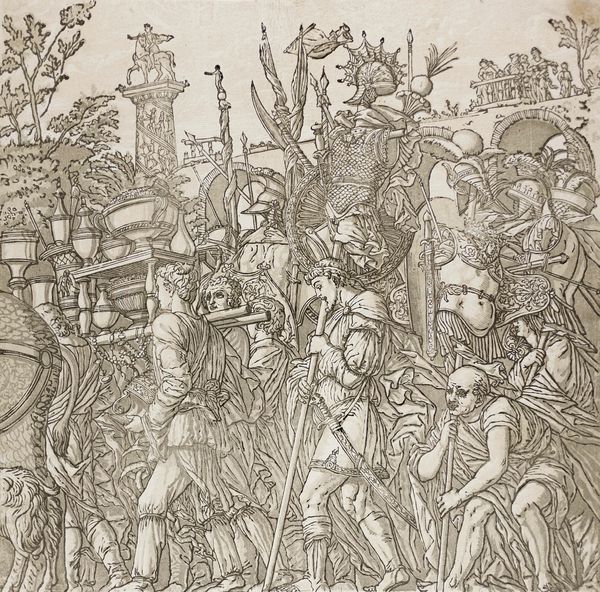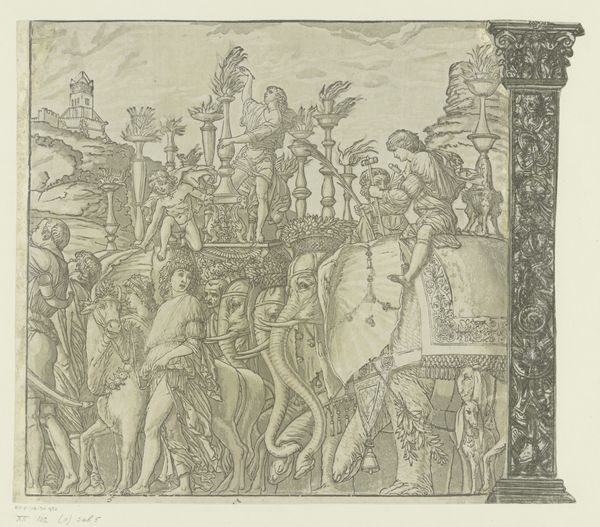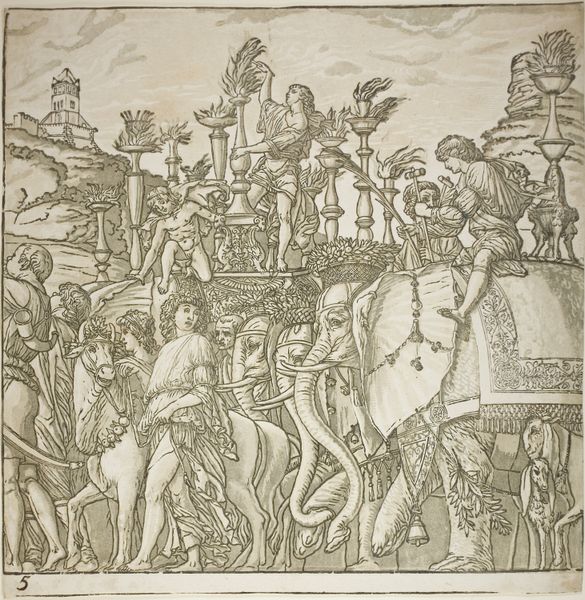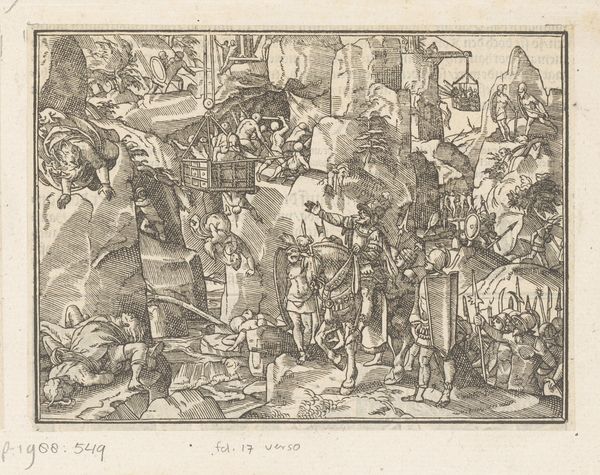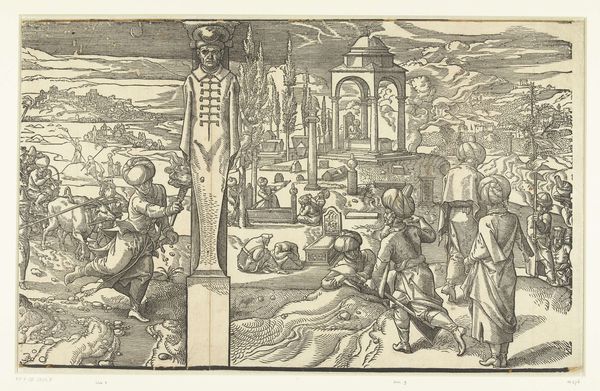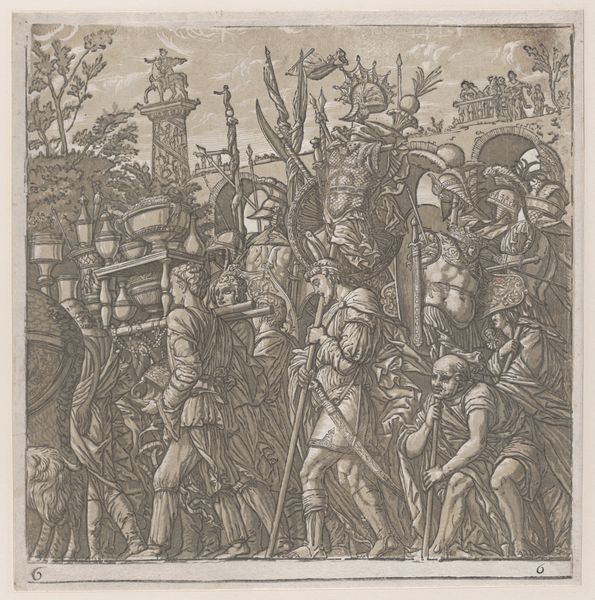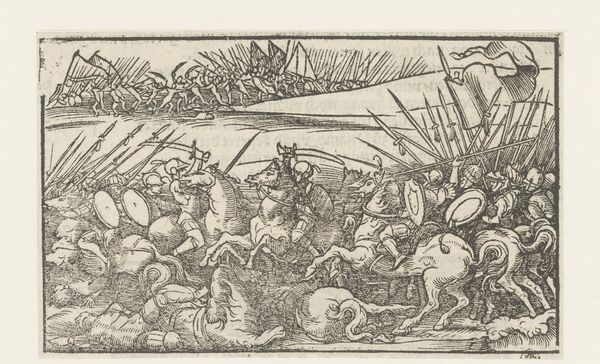
print, engraving
#
baroque
# print
#
pen sketch
#
figuration
#
form
#
line
#
history-painting
#
engraving
Dimensions: height 373 mm, width 426 mm
Copyright: Rijks Museum: Open Domain
Curator: I find myself immediately captivated by the tonal range, how the light dances across the page, creating such dynamism despite the monochrome palette. Editor: We’re standing before Andrea Andreani’s “Triumph of Julius Caesar”, created in 1599. Andreani was working from designs after Mantegna, which offers insight into both Renaissance and later Mannerist political thought regarding conquest and power. Curator: The composition certainly evokes grandeur. Observe the procession winding its way through the scene, a symphony of linear forms building into this magnificent spectacle. The engraving medium, in particular, allows for such precise and intricate detail, notice the faces, drapery, and weapons… Editor: It’s impossible to ignore the potent themes of Roman militarism and political domination embedded here. Look closely: Caesar is presented as a godlike figure, with the defeated and their spoils paraded as symbols of his power. It really showcases how art at this time, often acted as propaganda reinforcing a very specific social hierarchy. Curator: I appreciate that interpretation. The architectural border, the sheer verticality… it's designed to impress upon the viewer an understanding of immense strength. Even in print form, Andreani captures something awe-inspiring. Editor: Indeed. And when considering it, how does it speak to our current discussions around colonialism, the use of violence in nation-building and representation of the Other in historical narratives? The “triumph” here isn’t simply celebratory; it actively perpetuates ideas of dominance. Curator: Your reading encourages a productive confrontation. The skill of the engraver however in delineating these characters – their volumes and shapes… it is still what makes it so intriguing for me. The modulation, texture... the print creates its own space. Editor: It is precisely this convergence, I think, of masterful craft and complicated content that makes Andreani's work so compelling. By interrogating the history— the triumph of its visuals – can allow us to really see the underbelly that often lurks behind these supposed golden eras. Curator: A powerful perspective from which to understand not only "The Triumph of Julius Caesar", but perhaps art's role within any victory, even today. Editor: Thank you. Indeed, a deeper look can push beyond a surface-level reading of glory and conquest.
Comments
No comments
Be the first to comment and join the conversation on the ultimate creative platform.
